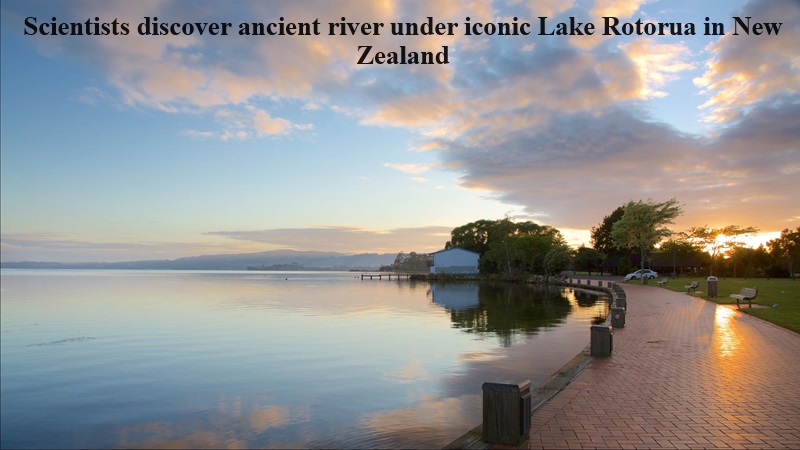
Rotorua, a city situated in New Zealand, derives its name from the renowned Lake Rotorua, a prominent feature located in the Bay of Plenty Region on the North Island of the country. The city is celebrated for its unique combination of geothermal activity and rich Maori cultural heritage.
Lake Rotorua occupies the central position within a vast historic crater formed by a dormant volcano on the North Island. This lake holds significant cultural and historical importance, intertwined with numerous folklore and legends passed down through generations.
In a recent development, scientists have made a groundbreaking discovery deep beneath the waters of Lake Rotorua. Researchers from a New Zealand research institute conducted a comprehensive mapping of the lake’s floor, revealing astonishing and previously unseen details. According to experts at GNS Science, the mapping uncovered eruption craters, traces of an ancient river, and a notable magnetic anomaly in the southern region of the lake. This newfound evidence strongly suggests that the hydrothermal systems originating from Rotorua’s mainland extend into the hidden depths of the lake for the first time.
The detailed maps indicate the potential presence of “significant” geothermal resources within the lakes situated in this historically active region. These surveys were conducted in collaboration with the New Zealand Defence Force during the years 2016 and 2017.
Dr. Cornel de Ronde from GNS Science elaborated that the mapping efforts, covering approximately 70% of the lake with a resolution of 1 meter, unveiled a diverse range of phenomena concealed beneath the lake’s surface. In describing the significance of the findings, Dr. de Ronde likened the experience of examining the maps to putting on corrective glasses for the first time, enabling a newfound clarity akin to discovering fine print previously unseen.

Post Your Comments